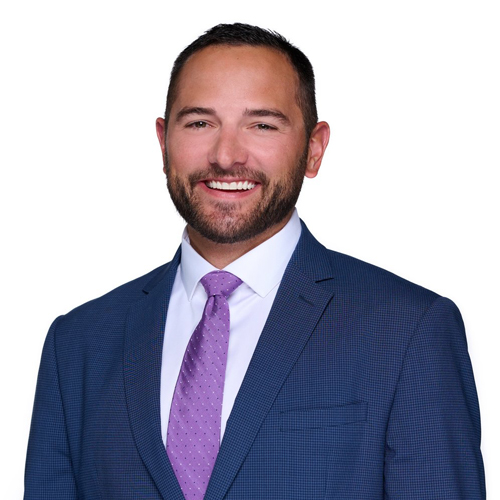November is the real planning month. Books are being closed, charitable intentions are getting finalized, and both retirees and business owners have one clean window to control their tax outcomes before the calendar flips. As for retirees, the One Big Beautiful Bill created a temporary senior deduction through 2028, and many are now operating with extra room in the lower tax brackets, meaning that could be you. In this article, the goal is to pull the pieces of your financial life together so the final weeks of the year work in your favor rather than surprise you in April. The end of the year is coming fast, and with the holidays soon upon us, it might behoove you to get the ball rolling sooner rather than later. Also, it is wise to bring your CPA, estate attorney, and financial advisor into the conversation so each decision is handled correctly and with full coordination.
Individuals & Retirees
Manage Your Tax Bracket
Thanks to the “One Big Beautiful Bill” Act (OBBBA), most seniors now get an extra $6,000 per person deduction from 2025–2028. For a married couple over 65, that’s $12,000 on top of the regular standard deduction, meaning a potential maximum standard deduction of $46,700 in 2025. If your modified adjusted gross income (MAGI) stays at or below about $75,000 (single) or $150,000 (married filing jointly), you can claim the full extra senior deduction, making it much easier, in some cases, for your Social Security benefits to end up effectively tax‑free.
This creates an opportunity (for those in this window) to intentionally recognize more income up to the top of your low tax bracket.
For example, you might do Roth IRA conversions or take extra IRA withdrawals now, while your tax rate is minimal. This reduces future taxable Required Minimum Distributions (RMDs) and shifts money into tax-free Roth accounts for later. Just be careful not to push too far, as every dollar of extra modified AGI above the thresholds can make part of your Social Security taxable and gradually phase out that senior deduction.
Time Roth Conversions and RMDs
With Social Security not eating up your tax brackets now, consider converting some traditional IRA funds to Roth by 12/31 if you’re in a low bracket. A well-timed Roth conversion in a 10% or 12% bracket can beat a forced IRA distribution later at higher rates. Just do the math (or work with your advisor) to convert only up to the top of a comfortable bracket. Also, if you turned 73 this year (or are older) and must take an RMD from your retirement accounts, be sure to withdraw the required amount by December 31 to avoid a hefty penalty.
Use QCDs for Charitable Gifts
Individuals age 70½ or older can transfer up to $108,000 in 2025 (up from $105,000 in 2024) directly from an IRA to charity, via what’s formally known as a Qualified Charitable Distribution (QCD). QCDs count toward your RMD if you’re 73+, but they don’t count as income on your tax return, which helps you stay under the Social Security and Medicare income thresholds.
In other words, a QCD lets you give to charity tax-free out of your IRA instead of taking a taxable distribution. If you haven’t taken your RMD yet and don’t need the money, doing a QCD by year-end can satisfy the RMD and reduce your taxable income. Just ensure the funds go directly from the IRA custodian to a qualified charity (and keep the receipt). It’s a savvy way to benefit a cause, lower your AGI, and possibly keep more of your Social Security tax-free.
Watch the 3.8% NIIT Thresholds
The Net Investment Income Tax is a surtax that hits higher-income investors. It’s a 3.8% tax on investment income (interest, dividends, capital gains, rental income, etc.) if your modified AGI exceeds $200,000 (single) or $250,000 (married filing jointly). If you’re near those levels, consider year-end strategies to avoid spilling over. You might defer a year-end bonus or capital gain into next year, harvest some investment losses to offset gains, or gift shares instead of selling. Also, qualified withdrawals from Roth IRAs do not count as AGI, another reason Roth conversions (earlier in the year) can pay off long term.
Additionally, NIIT thresholds aren’t indexed for inflation, so more investors are likely to get snagged each year. If you expect a one-time income event (e.g. selling a business or property) that would trigger NIIT, see if spreading the income over two tax years or using an installment sale could keep your MAGI below the line in each year.
Consider Maxing Out HSAs and Other Tax-Advantaged Accounts
If you have a High Deductible Health Plan, you can likely fund a Health Savings Account, which offers a rare triple-tax advantage. Contributions are deductible (or pretax if through work), growth is tax-free, and withdrawals are tax-free for qualified medical expenses. For 2025, the HSA contribution limit is $4,300 self-only or $8,550 family, plus an extra $1,000 “catch-up” if you’re 55+.
Even in retirement, HSA funds can cover Medicare premiums, dental, vision, etc. tax-free. Because you can contribute up until April 15, 2026 for the 2025 tax year, you have some flexibility, but it’s often best to contribute regularly or as early as possible to maximize growth. Just make sure you were HSA-eligible (enrolled in a HDHP and not on Medicare) during 2025 for the months you contribute. And if you turned 65 this year and enrolled in Medicare, you’ll want to stop HSA contributions to avoid a penalty.

Individuals & Retirees Year-End Checklist
Disclaimer: This checklist is for educational and informational purposes only and does not constitute tax, legal, or financial advice. Please consult with your financial advisor, CPA, and estate attorney before making any decisions.
Business Owners
Protect Your §199A Deduction
The Qualified Business Income (QBI) deduction (20% pass-through deduction) is still with us and remains a big tax-saver for owners of S-corporations, partnerships, LLCs, and sole props. Keeping your taxable income within the allowable range will help preserve the full deduction. For 2025, the phase-out for specified service businesses (and the wage/property limits for others) begins around $394,600 taxable income for joint filers (half that for singles).
If you’re under those thresholds, you get the full 20% deduction on QBI. Above them, deductions can be limited or eliminated, especially for service businesses (like doctors, attorneys). As year-end approaches, consider tactics to manage your taxable income: for example, deferring income into next year or accelerating deductible expenses into this year to keep income below the threshold. Also review the W-2 wages and depreciable property in each business if you’re over the threshold, as you’ll need enough wages or property basis to maximize the deduction in high-income cases.
Review Reasonable Compensation (S-Corps)
If your business is an S-corp, ensure you’ve paid yourself (and other active owners) a reasonable salary before year-end. The IRS requires that shareholder-employees of S-corps be paid wages for their work, rather than taking all income as distributions. Failing to do so can trigger back taxes and penalties, and it may hurt your QBI deduction too, because the W-2 wages your S-corp pays (including to you) are what support the wage-based safe harbor for high earners.
Do a quick check: is your 2025 salary in line with what you’d pay someone else for the work you do? Factors like your role, hours, industry norms, and company profits come into play. If you’ve been taking mostly distributions, consider declaring a year-end bonus payroll to get compensation up to a reasonable level. This also helps with 401(k) contributions (since those are based on W-2 wages) and solidifies your position in case of IRS scrutiny. Remember, the IRS can reclassify distributions as wages if they decide your salary was unreasonably low, so it’s better to preempt that by paying yourself the right amount and remitting the payroll taxes now.
Year-End Retirement Plan Actions
Business owners should leverage retirement plans for both tax savings and employee retention. Check if you’re on track with 2025 contributions to any employer plans. For instance, 401(k) salary deferrals for yourself and staff generally must be made by 12/31. If you haven’t maxed out, a year-end bonus run might allow extra elective deferrals (for 2025, the employee salary deferral limit is $23,500; if you’re 50 or older you can add a $7,500 catch-up for a total of $31,000, and if you’re between ages 60 and 63, the special SECURE 2.0 “super catch-up” lets you defer up to $34,750, if your plan allows it).
Also consider profit-sharing or employer contributions. While you typically have until your tax filing deadline in 2026 to fund those, you’ll want to calculate them now and ensure you have cash set aside. If you don’t yet have a retirement plan for your company, it’s not too late to establish one and potentially deduct contributions for 2025 (thanks to SECURE Act rules).
For example, you can still set up a SEP IRA for 2025, or adopt a new 401(k) plan by the due date of your 2025 return, and make employer contributions that count as 2025 deductions (employee salary deferrals generally have to be made by 12/31).
Also review any needed plan amendments. SECURE 2.0 made numerous changes, (such as higher catch-up limits for ages 60–63 starting 2025, optional emergency savings accounts, etc.) and while most mandatory plan amendments aren’t due until the end of 2026, you should identify now which provisions you’ll adopt. For example, will you allow the new higher catch-up contributions or matching on student loan payments? Planning ahead will keep your plan compliant and optimized.
Timing of Equity Compensation
If you’re an entrepreneur or executive with stock options, restricted stock units, or other equity compensation, year-end is a strategic time to plan. One reason is tax timing. For instance, exercising Incentive Stock Options (ISOs) creates an alternative minimum tax (AMT) event. The AMT calculation for 2025 may be more favorable than in 2026 due to certain OBBBA changes (the AMT exemption phaseout is expected to hit more taxpayers in 2026).
For instance, exercising Incentive Stock Options (ISOs) creates an alternative minimum tax (AMT) event. Thanks to OBBBA’s AMT changes coming in 2026, 2025 may be a relatively favorable year to exercise, especially if you’re otherwise below the AMT radar. By exercising ISOs in 2025, you start the long-term capital gains holding period now, and you can then decide in 2026 or later when to sell the shares once you’ve met the holding requirements.
S-Corp and Partnership Housekeeping
A few more compliance odds-and-ends to check: Have you made all required state filings and tax payments (like fourth-quarter estimates or state franchise taxes) for your business? If you operate as an S-corp or partnership, the deadline to elect out of the new pass-through entity tax (if your state has one) or to make the election might be year-end in some jurisdictions. If you sponsor a health plan or fringe benefits for owners, ensure you’re properly including the value in wages where required (for example, S-corp owner health insurance needs to be on your W-2 by year-end).
And take a look at any carryover benefits. Do you have a balance in a company FSA that needs spending? Year-end is also a natural time to perform an internal audit: reconcile your bookkeeping, verify you’ve accounted for all 2025 income and expenses, and prepare a plan for 1099s (due to vendors by Jan 31). Handling these now will make tax season much smoother. These could influence your January decisions (like starting a new plan or upping next year’s contributions), so keep an eye out for that.

Business Owners Year-End Checklist
Disclaimer: This checklist is for educational and informational purposes only and does not constitute tax, legal, or financial advice. Please consult with your financial advisor, CPA, and estate attorney before making any decisions.
Gifting & Estates
Use Your Annual Gift Exclusion
The annual gift tax exclusion for 2025 is $19,000 per recipient (up from $18,000 in 2024). This means you can give up to $19k to as many individuals as you like, completely tax-free and without using any of your lifetime estate exemption. Married couples can “split” gifts for a combined $38,000 per recipient. Now’s a great time to review if you’ve made any significant gifts this year. If not, and you have the means, consider using your 2025 exclusion by gifting to children, grandchildren, or others you want to help. It can be cash, stocks, or even paying someone’s tuition or medical bills directly (which doesn’t even count against the $19k limit if paid to the institution).
A popular strategy for grandparents is contributing to a 529 college savings plan. You can even front-load five years’ worth of exclusions at once (though that uses up future years’ limits). Just be sure large gifts are completed (checks cashed, wires executed) by December 31 to count for 2025. And if you’ve already exceeded $19k to any one person (other than direct medical/tuition payments), talk to your CPA about filing a gift tax return. The good news is the lifetime estate/gift exemption is over $13.9 million in 2025 per individual, so small overages won’t cause tax, but they do chip away at your unified credit.
Plan Trust Distributions and the 65-Day Rule
If you have a family trust (non-grantor trust) that accumulates income, remember that trust tax brackets are very compressed. In 2025, a trust pays the top 37% federal rate on any income over roughly $15,000. By contrast, individuals don’t hit 37% until hundreds of thousands of income. Trusts also get hit by the 3.8% NIIT surtax at just ~$15k of investment income.
If the trust doesn’t need to retain income (for beneficiary or asset protection reasons), it can often save taxes by distributing income out to the beneficiaries, who likely pay at lower rates. Review your trust’s Distributable Net Income (DNI) for 2025 and decide if making distributions makes sense. Importantly, trusts and estates can elect to treat distributions made in the first 65 days of the new year as if they were made on December 31 of this year. This is the 65-day rule (Section 663(b) election), and it gives you until early March 2026 to actually pay out 2025 income to beneficiaries and still have it count for 2025 taxes.
Intrafamily Wealth Transfers & Other Considerations
If you have a grantor trust (like an irrevocable trust where you pay the tax on its income), evaluate if you need to swap any assets or make cash gifts to cover the trust’s 2025 tax bill. Also double-check beneficiary designations on retirement accounts and life insurance as part of year-end housekeeping. And for those charitably inclined, think beyond cash: gifting appreciated stock from a brokerage account can give you a fair market value deduction and avoid capital gains tax on that appreciation.
If you’re over 73 and had to take RMDs this year, consider whether you want to reduce next year’s RMD by doing a qualified rollover to a Roth or qualified longevity annuity (QLAC) by year-end. A QLAC purchase can move up to $210,000 in 2025 out of your RMD calculation (by turning that slice into a deferred annuity that can start as late as age 85). SECURE 2.0 removed the old “25% of the account” cap and replaced it with this indexed dollar limit. It’s a bit niche, but worth mentioning if estate preservation and RMD reduction are goals.

Gifting & Estates Year-End Checklist
Disclaimer: This checklist is for educational and informational purposes only and does not constitute tax, legal, or financial advice. Please consult with your financial advisor, CPA, and estate attorney before making any decisions.
In Conclusion
The end of the year moves quickly. Between Thanksgiving, Christmas, holiday travel, and family visits, it’s easy for financial tasks to slide to the bottom of the list. The issue is that this short window often carries more weight than any other month. The senior deduction from the One Big Beautiful Bill, today’s lower federal tax brackets, and several time-sensitive planning rules give households an opportunity that won’t last forever, so acting before the calendar turns helps protect the advantages available right now.
Coordinating with your CPA, estate attorney, and financial advisor helps ensure that each step supports the next. When those pieces fit together, tax planning becomes clearer, retirement income becomes more predictable, and the long-term plan for your family’s wealth stays on course.
If your retirement plan, business plan, and estate plan have not been evaluated together recently, this is a sensible moment to bring them back into alignment. You can schedule a year-end review to confirm that all three are working with today’s rules and supporting your goals by clicking the button below.
Sources:
- https://www.irs.gov/newsroom/one-big-beautiful-bill-act-tax-deductions-for-working-americans-and-seniors
- https://www.schwab.com/learn/story/one-big-beautiful-bill-act-tax-cuts
- https://www.fidelitycharitable.org/guidance/philanthropy/qualified-charitable-distribution.html
- https://www.irs.gov/newsroom/questions-and-answers-on-the-net-investment-income-tax
- https://www.fidelity.com/learning-center/smart-money/hsa-contribution-limits
- https://actecfoundation.org/podcasts/qualified-business-income-deductions-post-obbba
- https://www.irs.gov/businesses/small-businesses-self-employed/whats-new-estate-and-gift-tax
- https://smartasset.com/taxes/trust-tax-rates
- https://www.northerntrust.com/united-states/institute/articles/the-65-day-rule-its-impact-on-trust-income-taxes
- https://www.lordabbett.com/en-us/financial-advisor/insights/retirement-planning/2025/when-does-a-qualified-longevity-annuity-contract-make-sense.html











